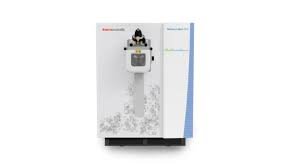Thursday, 13 November 2025
US scientists develop a smartphone app to prevent food poisoning
The UMass scientists say several food processing companies have contacted them since the research went public last month. But they’re still several years away from market. In order to make…
The UMass scientists say several food processing companies have contacted them since the research went public last month. But they’re still several years away from market.
In order to make it a lot easier to avoid food poisoning, food scientists at the University of Massachussetts Amherst have come up with a technique using a smartphone.
Food scientists currently use DNA testing to identify bacteria like E. coli or salmonella. Bacteria are taken from samples such as raw spinach or chicken skin or by rinsing the food and collecting a tiny bit of bacteria. In order to get a big enough sample, bacteria are multiplied by over 24 hours. This method is time consuming and requires specialized equipment.
Bacteria can be in the very, very low numbers, and cause illness,” said UMass microbiologist Lynne McLandsborough. “So that detection needs to detect low numbers,” he added.
McLandsborough is working with UMass food science professor Lili He on what they say is a much simpler and more accessible tool to detect harmful bacteria in food; a smartphone app that uses a $30 microscope attachment.
The device works in conjunction with a chemically-coated chip that binds to bacteria, even in tiny amounts.
“So that molecule can grab bacteria from the water,” he said.
Dipping the chip into contaminated water for half an hour will reveal bacteria, as Adam Salhaney, an undergraduate demonstrated in He’s lab.
“You can take this …microscope attachment for any smart phone,” Salhaney said, gripping the iPhone 7 they use as a prototype,”and you can clip it right onto the camera.”
After pointing the microscope at a gold chip they’d coated with salmonella, Salhaney enlarged an image with a number of black dots set against the gold background of the chip. The dots were bacteria.
Since his hand was shaking a bit, Salhaney had to work to get the image into focus. “But I think the average consumer will be able to figure it out without much trouble,” he said.
They hope consumers will eventually buy the testing kit for their own kitchens. It could also prove useful after natural disasters to test drinking water.
The UMass scientists say several food processing companies have contacted them since the research went public last month. But they’re still several years away from market.
“Right now, this is really preliminary,” said McLandsborough. “We can detect bacteria with the iPhone, but we don’t know if they’re pathogenic — if they’re harmful bacteria or good bacteria.”
She said they’re trying to develop a technique that will identify the exact type of bacteria.
In the meantime, for her own food safety, McLandsborough avoids raw sprouts and raw oysters, and cooks her hamburgers to medium.
The news first appeared on New England Public Radio.
Technology
Tetra Pak opens Product Development Centre in France
Nov 13, 2025 | Company News
MENU ORDER AI to launch app aimed at GLP-1 users and health-conscious diners
Nov 10, 2025 | Company News
Harnessing Quantum AI for Greener Minds and Healthier Futures
Nov 10, 2025 | Interaction
Food Testing
Intertek acquires Costa Rican testing business Suplilab
Nov 07, 2025 | Company News
Thermo Fisher Scientific launches Orbitrap mass detector for food safety testing
Oct 24, 2025 | Company News
ADM advances quality capabilities with opening of new Central Milling Laboratory
Oct 16, 2025 | Company News
More Popular
Syren Spreads launches spoonable adaptogenic beauty chocolate
Nov 13, 2025 | Company News
Gunpowder Irish Gin expands with new Italian Fig & Laurel Expression
Nov 13, 2025 | Beverages
8 winter foods that transform your skin by healing your gut first
Nov 13, 2025 | Beverages






